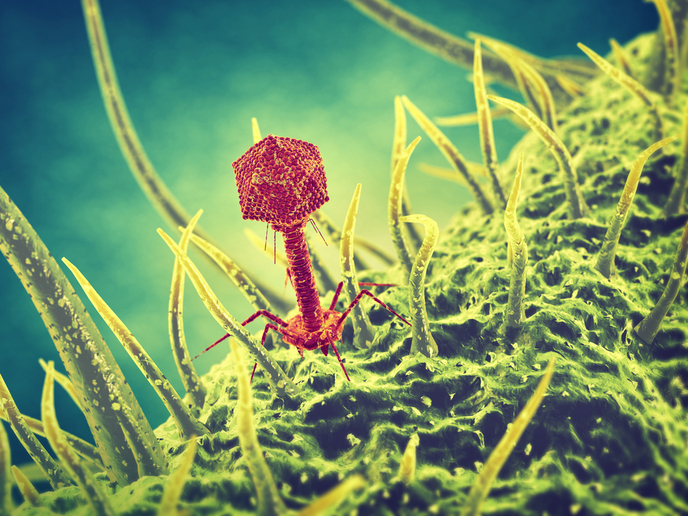Nature’s viruses to the rescue to tackle antibiotic-resistant microbes
More than half a million people die every year from multidrug-resistant bacterial infections. Even more alarming, the WHO forecast(opens in new window) is for 10 million deaths in 2050. Phage therapy(opens in new window), the use of bacteriophages for treatment, is a promising possibility, especially with the advent of specially selected viruses for the attack and destruction of any new microbial strains. Philippe Rousseau, Chief Operating Officer at Pherecydes Pharma(opens in new window), coordinating company of the EU funded PhagoPROD project, outlines: “The core goal of the project was to develop production processes for the good manufacturing practice (GMP) production of phages.” The idea was to transfer these methods to qualified, preselected subcontractors for them to produce GMP batches of phages for clinical trials initiation and early access programmes to treat patients at a broader level. These programmes allow pre-approval access to medicines for patients, particularly those with a life-threatening disease.
Enter the ‘Phagogram’ into the arena
Pherecydes Pharma has developed phage products obtained by purification and amplification of natural phages. These are active against the main antibiotic-resistant strains(opens in new window) that pose a major threat to public health worldwide: Pseudomonas aeruginosa, Staphylococcus aureus, known as methicillin-resistant S. aureus or MRSA, and Escherichia coli. In the approach towards precision phage therapy, the project team also incorporated the goal to develop a new version of the production process and tools, the ‘Phagogram’ that measures the activity of different phages on the patient bacterial strain. Phagogram enables treatments specific to each patient, which means that only the viruses active against each strain will be administrated to the patient. In the treatment design, an activity diagnostic is performed in a lab to determine which phages will be distributed to the patient. The process is ongoing and, in parallel to the GMP production goal, the team is working on the optimisation of the Phagogram. “Our additional aim is to develop a new version of our Phagogram tool to be able to screen more samples quicker and closer to the patient,” adds Rousseau.
Challenges and project resilience
With such an ambitious project over 3 years, there were many issues that sprang up to challenge the team. “One of the main problems we had to overcome was following the scientific advice of the European Medicines Agency regarding the chemistry, manufacturing and control (CMC) of phages,” explains Rousseau. All stages of the drug development life cycle after a drug discovery involve CMC. During preclinical drug development, the proper analytical methods are validated to monitor the product. To counter this, they had to reinvent some production processes, develop new controls from scratch and gather a diverse group of subcontractors to produce GMP batches of phages. Furthermore, they had to rely even more on subcontractors than initially thought to deliver the required standard of phages. This involved scouting, choosing and training subcontractors while still keeping the know how within their organisation. Summing up the feeling of achievement within the team, Rousseau concludes: “We are very confident we will be able to deliver GMP batches of phages to develop our process of precision phage therapy. Ultimately, we will offer new treatment options to patients as they need them.”







